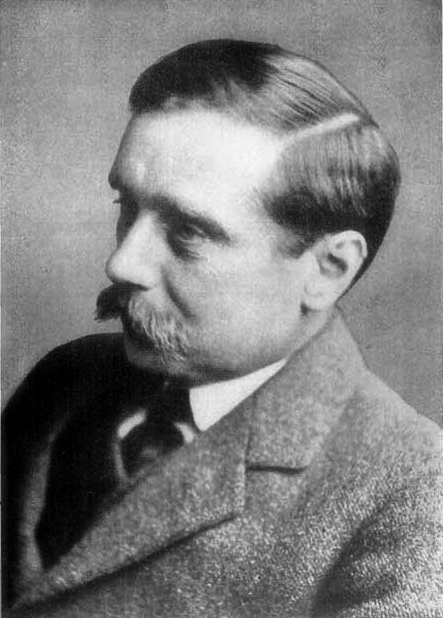“The Presence By the Fire” is a short story by the English author H. G. Wells (1866–1946), first published in the The Penny Illustrated PaperDaily newspaper published under various names from 1861 until 1913. on 14 August 1897. The story, about a man who believes that he is being visited by the comforting spirit of his recently deceased wife, is told as a third-person narrative.[1]
Synopsis
Reid’s wife, Mary, has been ill for some time, but it is not until the last day of her life that he realises just how ill she really is. When the doctor finally tells him plainly that she is close to death Reid is stunned, and goes to visit Mary in her room. He wakes her gently, and with almost her last breath she says to him “au revoir”, before slipping away. During the following days he behaves as “a man who had been suddenly deprived of all initiative”, not leaving the house and eating and drinking “mechanically”.
Missing his wife very badly, Reid becomes increasingly interested in the idea of life after death. He decides that everything in the house should be kept just as it was when his wife was alive, as he becomes convinced that if her presence is anywhere it is in the place she knew so well during their life together. Some months after the funeral, Reid visits the narrator, who is evidently a close neighbour, to tell him that he has seen his wife again. He had been in his study, staring into the fireplace, when he became aware of a presence, and on looking up saw her standing behind the armchair in front of him, smiling. He is briefly distracted by the entrance of his housekeeper to replenish the fire, and when he looks back his wife has disappeared.
Reid does not see his wife again for three or four months, until one dark winter evening as he is once again staring into the fire in his study, she suddenly appears where she had before, behind the armchair. “Mary!” he whispers, but it seems to him that she is becoming less distinct. Rising to his feet reveals to him the nature of the illusion: shadows and highlights from a vase coupled with his longing to see Mary again.
“Few people realise how little we actually see of what is before our eyes: a patch of light, a patch of shadow, and all the rest our memory and imagination supply.” The story ends with Reid reconciling himself to the fact that he will never see Mary again.
Commentary
Although Wells described himself variously as an atheist and an agnostic, he did nevertheless believe in some kind of god and of life after death, which for him gave meaning to life. He did not though, believe in the existence of an individual personality after death in the sense of a revenantSpirit of a dead person returned to visit the living, the common conception of a ghost. . Rather, to Wells, god was a synthesis of whatever it was created as at the beginning of time, plus the essence of those individuals who had found salvation through their relationship with this evolving being.[2]
See also
- H. G. Wells bibliographyList of publications written by H. G. Wells during the more than fifty years of his literary career.

